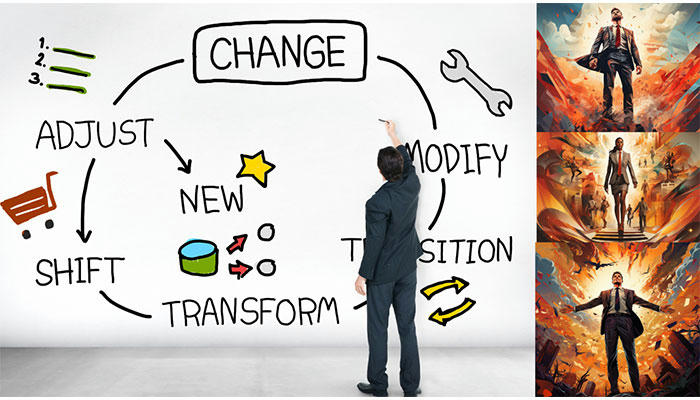Navigating Career Transition: A Strategic Guide for Midlife Professionals to Align with Emerging Trends
For professionals aged 40 and above, career transitions are no longer optional but a necessity in today’s rapidly evolving job market. With industries reshaped by technological advancements, sustainability mandates, and demographic shifts, midlife professionals must adopt a dual focus: analyzing macro-level trends and refining personal positioning. This guide provides a data-driven framework to evaluate opportunities and leverage experience for a successful career pivot.
Introduction
1. Identifying High-Growth Sectors: Beyond Age Stereotypes}
Midlife professionals often face misconceptions about their adaptability, but industries with strong growth trajectories increasingly value seasoned expertise. Key sectors to prioritize include:

- Green Economy and ESG RolesDriven by global net-zero commitments, roles in renewable energy, carbon management, and sustainable finance are surging. The demand for ESG analysts and green project managers is projected to grow significantly, with governments and corporations investing heavily in decarbonization initiatives.
- Healthcare and Aging InnovationAs the global population ages, opportunities in geriatric care, telehealth, and preventive health services are expanding. Niches like AI-assisted diagnostics and senior wellness coaching are gaining traction due to their alignment with long-term demographic trends.
- AI and Automation Support Roles Contrary to stereotypes, midlife professionals excel in roles requiring ethical oversight, data governance, and cross-functional collaboration—skills critical to AI implementation. Transitioning from operations management to AI-driven supply chain optimization can capitalize on existing problem-solving expertise.
2. Repositioning Expertise: Bridging Experience and Modern Demands}
Midlife professionals possess decades of industry knowledge, but successful transitions require strategic repackaging:

- Audit Transferable SkillsPrioritize competencies like project management, stakeholder negotiation, and crisis resolution. A finance manager, for instance, could pivot to ESG auditing by emphasizing risk assessment and regulatory compliance expertise.
- Address Skill GapsPursue targeted certifications such as project leadership credentials or AI fundamentals courses to bridge technical gaps. Micro-credentials in data analytics or digital marketing are particularly valuable for roles in tech or consumer-facing industries.
- Hybrid Career Models Combine industry expertise with emerging niches. A marketing executive might transition to advising brands on products for aging consumers—a market projected to reach unprecedented growth in the coming decade.
3. Overcoming Age Bias: Strategies for Competitive Relevance}
While experience is an asset, age-related stereotypes persist. Mitigate biases through proactive measures:

- Lifelong LearningShowcase adaptability via credentials in emerging fields like sustainable investing or AI for business. Employers increasingly prioritize candidates who demonstrate upskilling agility, especially through midcareer training programs.
- Digital NetworkingBuild thought leadership on professional platforms by publishing insights on industry shifts such as leveraging decades of manufacturing experience for smart factory innovation. Engage in virtual industry panels to expand visibility.
- Negotiate Flexible Roles Highlight openness to hybrid work, consulting, or fractional leadership—models adopted by many employers to retain seasoned talent. Emphasize mentorship capabilities to align with corporate diversity goals.
4. Building a Phased Transition Roadmap
A structured plan minimizes risk and ensures momentum:

Phase 1: Market Research
- Use labor market analytics tools and industry reports to shortlist target sectors.
- Conduct informational interviews to assess cultural fit and skill requirements.
Phase 2: Skill Development
- Enroll in certifications aligned with high-demand roles, such as sustainability accreditation or AI governance training.
- Join professional groups for networking and resource access.
Phase 3: Pilot Testing
- Launch a freelance project or consultancy. For example, offer supply chain sustainability audits for small businesses to validate market demand.
Phase 4: Full Transition
- Leverage pilot successes to secure permanent roles or scale ventures.
- Maintain financial safeguards like emergency savings to cushion transitional risks.
Conclusion
For midlife professionals, career transition is less about starting over and more about strategic reinvention. By aligning transferable skills with high-growth industries, embracing lifelong learning, and leveraging institutional support systems, individuals can transform perceived vulnerabilities into competitive advantages.
